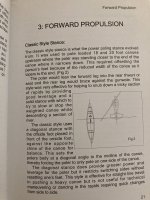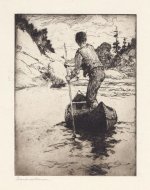Looking through the canoe art thread, I noticed several pictures of canoeists poling. What strikes me is the foot positioning of the polers. In all cases, they are standing in the center with one foot forward and the other back. I stand square to the center line of the canoe, with one foot in each chine, a 90-degree shift of the feet from the polers in the artists’ depiction.
I’m largely self taught in poling, so, like as not, I’m doing it wrong. Or, possibly, poling style has changed over the years. Is there a “right” way to stand? How do you stand?
I’m largely self taught in poling, so, like as not, I’m doing it wrong. Or, possibly, poling style has changed over the years. Is there a “right” way to stand? How do you stand?


